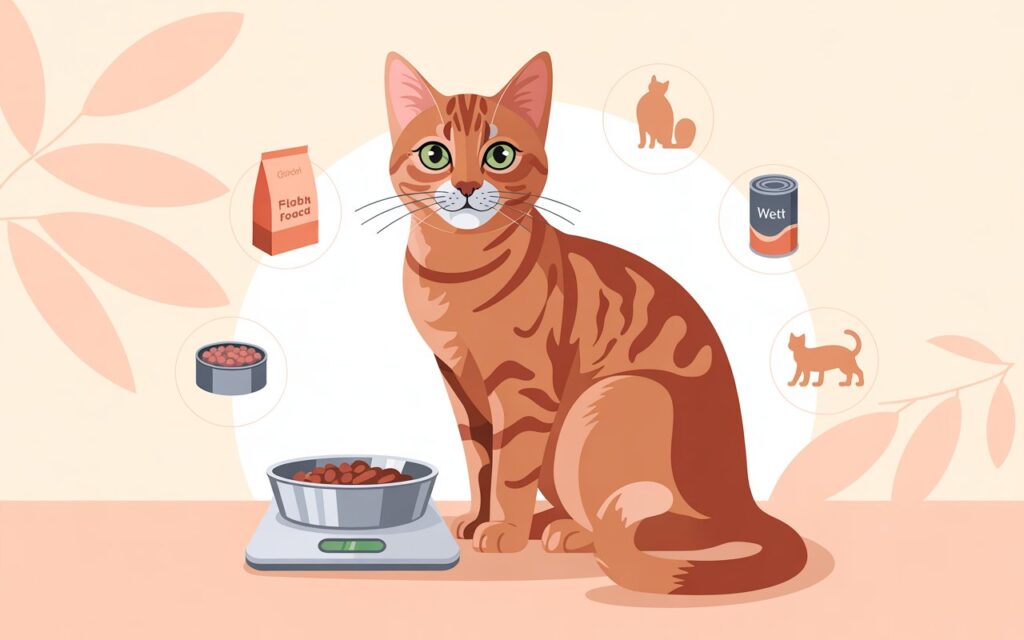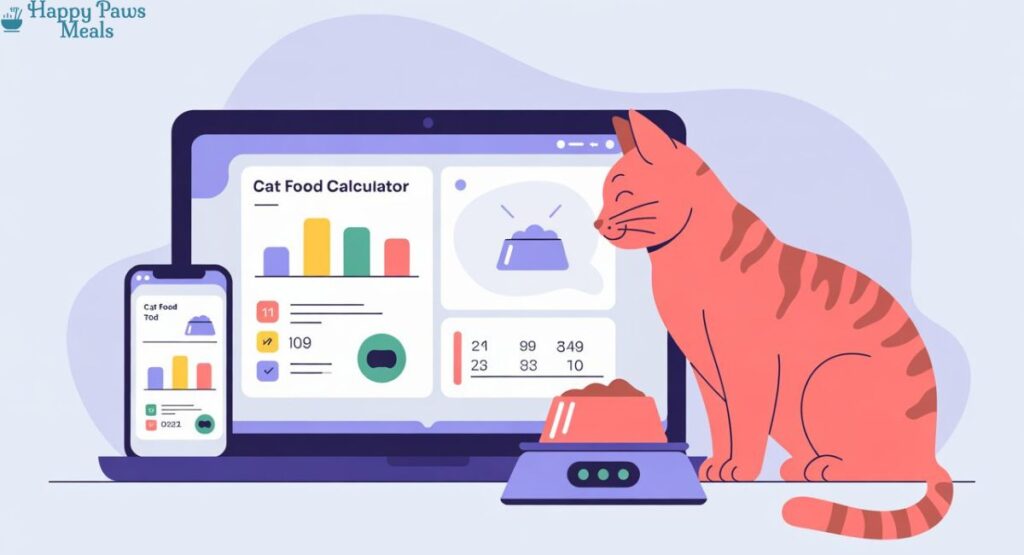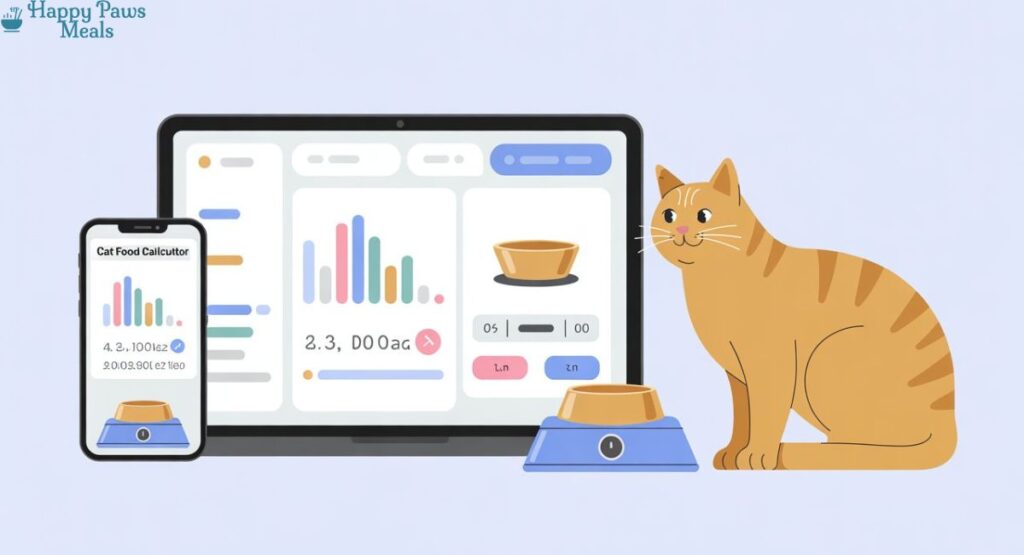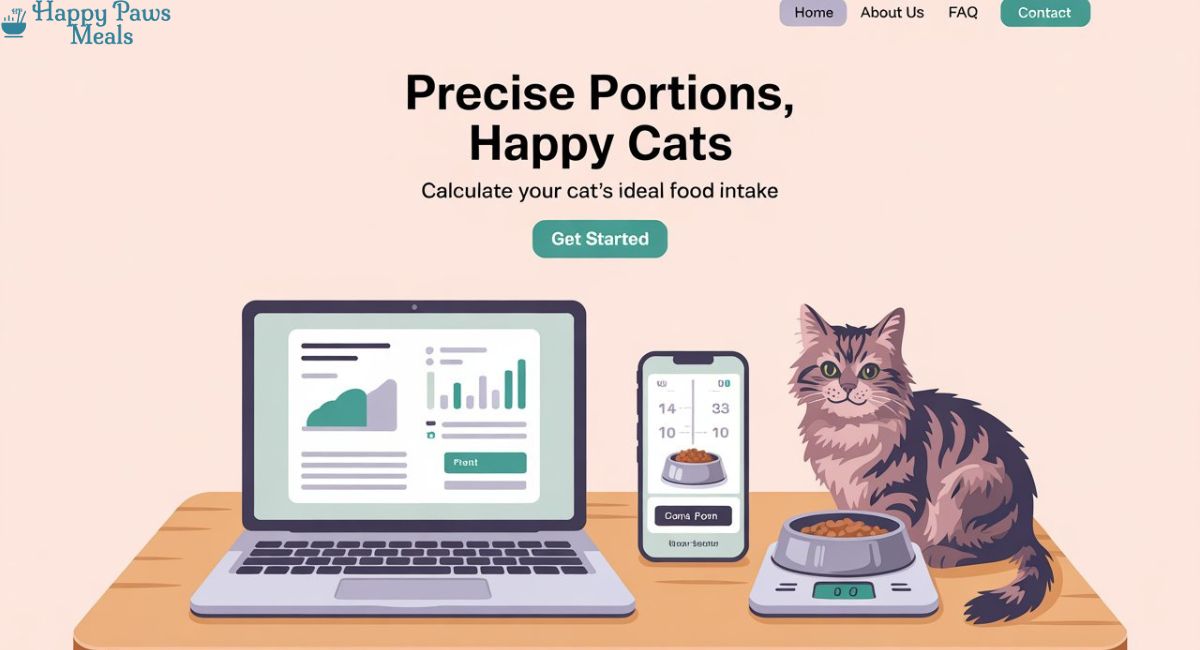Feeding cats may look simple—you just scoop food into a bowl, right? But in reality, most pet owners either overfeed or underfeed their cats. Studies show that more than half of pet cats in the world are overweight, while some are undernourished because their portions are too small.
This is where a cat food calculator becomes a game-changer. Instead of guessing, it helps you provide the right amount of food based on science. Whether you feed kibble, canned food, or homemade meals, a calculator gives you a personalized feeding plan.
In this detailed guide, we’ll show you how to use a cat food calculator, explain the formulas behind it, and share feeding tips from veterinarians. By the end, you’ll know exactly how to keep your cat healthy, energetic, and satisfied.
Why Portion Control Matters in Cats
Cats are small animals, and even a few extra kibbles can mean the difference between healthy weight and obesity. Unlike dogs, cats are obligate carnivores, meaning their bodies are designed to process protein and fat—not excess carbs. When cats overeat, the extra calories quickly turn into fat.

Problems caused by wrong portion sizes:
- Obesity → diabetes, arthritis, liver issues
- Undereating → malnutrition, weak immune system
- Digestive issues → vomiting, diarrhea, constipation
- Shorter lifespan → overweight cats live fewer years
👉 Using a cat food calculator ensures your cat’s diet is balanced and portioned correctly.
How Cat Food Calculators Work (Step by Step)
Step One: Calculate Resting Energy Requirement (RER)
RER=70×(body weight in kg0.75)RER = 70 \times (body\,weight\,in\,kg^{0.75})RER=70×(bodyweightinkg0.75)
This is your cat’s baseline calorie need.
Step Two: Apply Life Stage & Lifestyle Multiplier
- Kitten = RER × 2.0–2.5
- Adult Indoor = RER × 1.2–1.4
- Active Outdoor = RER × 1.6–2.0
- Senior Cats = RER × 1.0–1.2
- Weight Loss = RER × 0.8
Step Three: Convert Calories Into Portions
Check your food packaging (kcal per cup, per can, or per gram). Divide daily calorie needs by kcal per serving to get exact portions.
Cat Food Calculator Examples
🐱 Example 1: Kitten (Growing Fast)
- Weight: 2.5 kg
- RER: 70 × (2.5^0.75) = 140 kcal
- Multiplier (2.5): 140 × 2.5 = 350 kcal/day
- Feeding Equivalent:
- Kibble (350 kcal/cup) → 1 cup/day
- Wet food (90 kcal/can) → ~4 cans/day
For accurate feeding guidelines, you can also check the Chewy Cat Food Calculator, which adjusts portion sizes based on age, weight, and activity level
Chewy Cat Food Calculator🐱 Example 2: Indoor Adult Cat
- Weight: 5 kg
- RER: 234 kcal
- Multiplier (1.2): 234 × 1.2 = 280 kcal/day
- Feeding Equivalent:
- Canned food (90 kcal/can) → ~3 cans/day
- Dry food (350 kcal/cup) → 0.8 cups/day
🐱 Example 3: Overweight Cat
- Weight: 6.5 kg (target 5.5 kg)
- RER: 290 kcal
- Multiplier (0.8): 290 × 0.8 = 232 kcal/day
- Feeding Equivalent:
- Kibble (350 kcal/cup) → ~0.66 cups/day
Why Packaging Guidelines Aren’t Enough
When you buy cat food, the packaging usually has a feeding chart printed on the back. At first glance, it seems like a helpful guide, but in reality, these numbers are too general and not specific to your cat’s unique needs.

Here’s why relying only on packaging can cause problems:
- Generic Recommendations
The feeding instructions are based on an “average cat,” but no two cats are the same. Age, weight, activity level, metabolism, and even whether your cat is spayed or neutered all change calorie needs. A one-size-fits-all chart can’t match your cat’s lifestyle. - Overestimated Portions
Many pet food companies purposely list higher portion sizes because it makes you go through the bag or cans faster. This means you may end up feeding more than your cat really needs, which increases the risk of weight gain. - Doesn’t Consider Activity Level
Indoor cats that spend most of their time sleeping need fewer calories than outdoor or highly active cats. Packaging guidelines rarely separate the two properly, leading to overfeeding for less active cats. - Doesn’t Account for Neutering/Spaying
Neutered and spayed cats usually have slower metabolisms and need fewer calories to stay at a healthy weight. Packaging labels don’t factor this in, so following them can make your cat overweight over time.
👉 This is where a cat food calculator makes a big difference. Instead of relying on broad, generic numbers, it uses your cat’s exact weight, age, and activity level to calculate precise calorie needs. The result? Healthier weight management, fewer diet-related diseases, and a happier cat.
If you’re looking for brand recommendations, check out our guide on Chewy Cat Food: Best Picks for Healthy & Happy Cats in 2026
Cat Food Calculator for Dry Food vs Wet Food
Dry Food (Kibble)
- More calorie-dense → high energy in small volume
- Easy to overfeed if not measured
- Best portioned with cups or kitchen scales
Wet Food (Canned)
- Lower calories per gram
- Helps hydration (70–80% water content)
- Easier to portion since 1 can = fixed calories
Combination Feeding
Many owners feed both wet and dry. A calculator helps split daily calories into wet + dry portions correctly.
Special Situations Where Cat Food Calculators Help
- Senior Cats → fewer calories but higher protein
- Kittens → need 2–3× more calories for growth
- Obese Cats → calculators help create safe weight loss plans
- Diabetic Cats → portion control prevents sugar spikes
- Pregnant/Nursing Cats → need 2–3× more calories
Mistakes Owners Make Without a Calculator
❌ Free-feeding (leaving food out all day)
❌ Ignoring calories in treats
❌ Feeding “by eye” instead of measuring
❌ Not adjusting as cats age or gain weight
❌ Mixing brands without tracking calories

Vet Tips for Using a Cat Food Calculator
- Weigh your cat every 2–4 weeks
- Adjust calories if weight changes too fast
- Always measure food with a cup or scale
- Divide daily calories into 2–3 meals
- Keep treats under 10% of daily intake
Cat Food Calculator FAQs
Q1. Can I use a cat food calculator for raw diets?
Yes, just check the calories in each meat portion.
Q2. Are calculators the same for dogs and cats?
No, cats are obligate carnivores and have different needs.
Q3. Should I weigh my cat regularly?
Yes, monthly weigh-ins are essential for portion control.
Q4. What if my cat begs for more food?
Begging is often boredom, not hunger. Try toys or playtime.
Q5. Can calculators help in multi-cat households?
Yes, calculate each cat’s needs separately to avoid over/underfeeding.
Final Thoughts
The cat food calculator is more than just a tool—it’s a health strategy. By portioning food correctly, you protect your cat from obesity, malnutrition, and diet-related diseases.
Whether you’re raising a playful kitten, caring for a senior, or managing a weight-loss plan, a calculator ensures your cat gets exactly what they need.
👉 Stop guessing. Use a cat food calculator today, and give your feline the gift of long-term health.

I’m Awais Manzoor, the writer behind HappyPawsMeals. With years of interest in pet care and nutrition, I research and review cat and dog food to provide reliable, easy-to-understand advice for pet parents.

